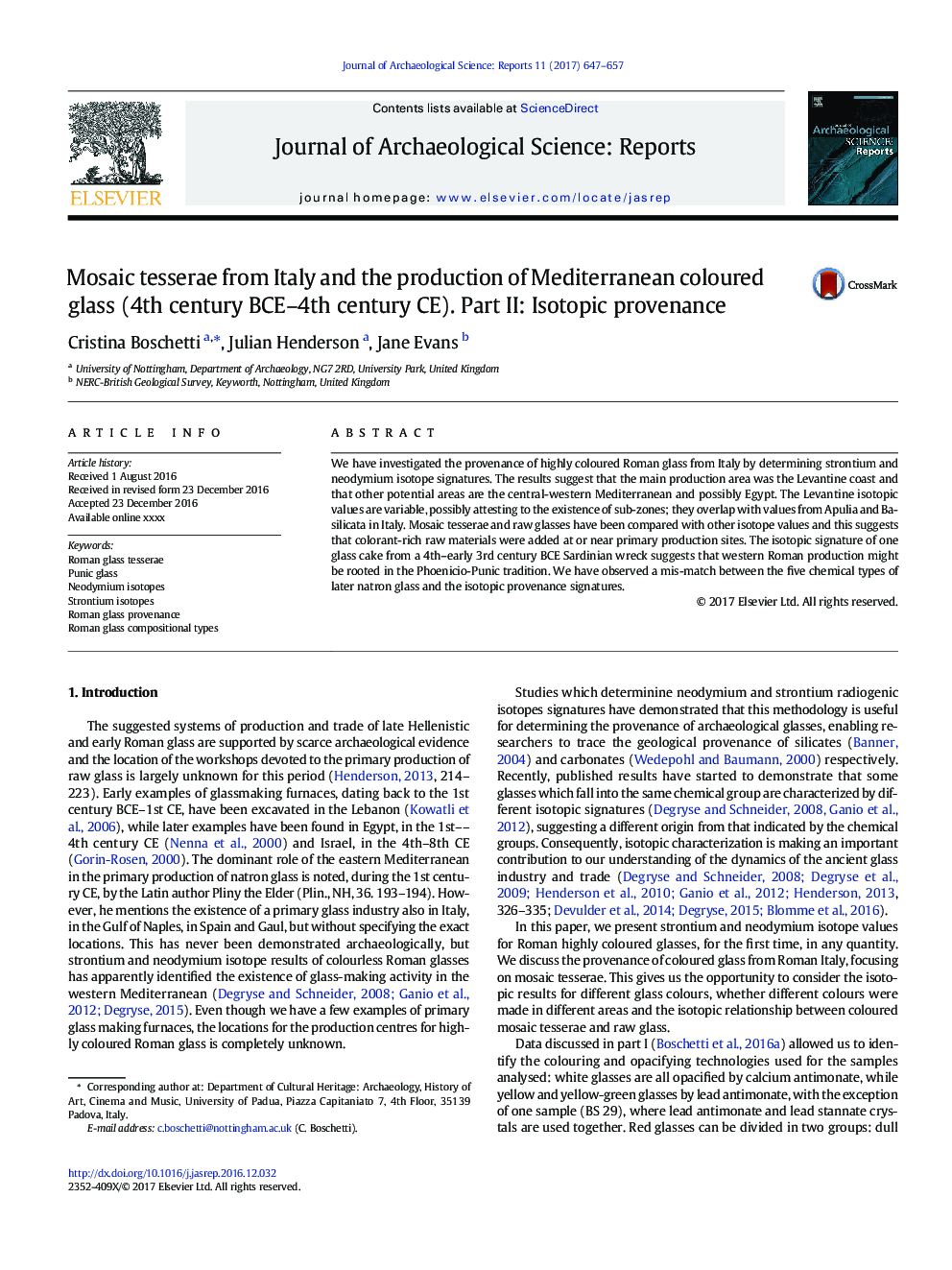| Article ID | Journal | Published Year | Pages | File Type |
|---|---|---|---|---|
| 5112593 | Journal of Archaeological Science: Reports | 2017 | 11 Pages |
Abstract
We have investigated the provenance of highly coloured Roman glass from Italy by determining strontium and neodymium isotope signatures. The results suggest that the main production area was the Levantine coast and that other potential areas are the central-western Mediterranean and possibly Egypt. The Levantine isotopic values are variable, possibly attesting to the existence of sub-zones; they overlap with values from Apulia and Basilicata in Italy. Mosaic tesserae and raw glasses have been compared with other isotope values and this suggests that colorant-rich raw materials were added at or near primary production sites. The isotopic signature of one glass cake from a 4th-early 3rd century BCE Sardinian wreck suggests that western Roman production might be rooted in the Phoenicio-Punic tradition. We have observed a mis-match between the five chemical types of later natron glass and the isotopic provenance signatures.
Keywords
Related Topics
Social Sciences and Humanities
Arts and Humanities
History
Authors
Cristina Boschetti, Julian Henderson, Jane Evans,
